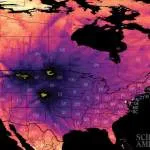(The BMJ) Three weeks after receiving a second dose of a covid vaccine, Robert Sullivan collapsed at home on his treadmill. An anaesthesiologist in Maryland, USA, he was a particularly fit 49 year old: the week before falling ill, he’d been happily skiing at altitude in Colorado.
Sullivan was given a diagnosis of sudden onset pulmonary hypertension, which is generally progressive, can be fatal, and in most cases can’t be cured. The condition is rare, especially in middle aged men. Sullivan decided to file a report in the Vaccine Adverse Event Reporting System (VAERS), which collects reports of symptoms, diagnoses, hospital admissions, and deaths after vaccination for the purpose of capturing post-market safety signals.
But the submission process was a glitchy race against the clock. “The format is cumbersome and it times you out,” he tells The BMJ. For his troubles, Sullivan received a confirmation by email and a temporary “e-report” number. He learnt from his doctor’s office that a VAERS representative had requested medical records. Then he didn’t hear back for a year.
VAERS is supposed to be user friendly, responsive, and transparent. However, investigations by The BMJ have uncovered that it’s not meeting its own standards. Not only have staffing levels failed to keep pace with the unprecedented number of reports since the rollout of covid vaccines but there are signs that the system is overwhelmed, reports aren’t being followed up, and signals are being missed.
The BMJ has spoken to more than a dozen people, including physicians and a state medical examiner, who have filed VAERS reports of a serious nature on behalf of themselves or patients and were never contacted by clinical reviewers or were contacted months later.
Our investigation has also found that, in stark contrast to the US government’s handling of adverse reaction reports on drugs and devices, the publicly accessible VAERS database on vaccines includes only initial reports, while case updates and corrections are kept on a separate, back end system. Officials told The BMJ that this was to protect patient confidentiality—but this means that patients, doctors, and other public users of the database have access only to an incomplete and uncorrected version.
Understaffed
Co-managed by the US Centers for Disease Control and Prevention (CDC) and the Food and Drug Administration, the VAERS reporting system relies on a mixture of voluntary adverse event reports from doctors and patients and mandatory reporting from vaccine manufacturers, which are required by law to report all adverse events they become aware of.
Good pharmacovigilance requires prompt data collection, review by people with clinical expertise, and adequate follow-up, says Marie Lindquist, former director of the Uppsala Monitoring Centre in Sweden, an internationally recognised non-profit pharmacovigilance body. “We know that even the best clinical trials won’t detect [rare adverse events],” she tells The BMJ.
VAERS’s standard operating procedure for covid-19 states that reports must be processed quickly, within days of receipt.12 “Serious reports” trigger the requisition of medical records and at minimum a “manual review,” while deaths and other “adverse events of special interest” may undergo a more “in-depth” clinical review by CDC staff.
However, The BMJ has learnt that in the face of an unprecedented 1.7 million reports since the rollout of covid vaccines, VAERS’s staffing was likely not commensurate with the demands of reviewing the serious reports submitted, including reports of death. While other countries have acknowledged deaths that were “likely” or “probably” related to mRNA vaccination, the CDC—which says that it has reviewed nearly 20 000 preliminary reports of death using VAERS (far more than other countries)—has not acknowledged a single death linked to mRNA vaccines.
Before the pandemic VAERS was receiving nearly 60 000 adverse event reports each year. A 2015 CDC article suggests that the agency had the capacity to request records for just a few thousand serious reports each year.3But in 2021 the total number of reports shot up to a million, and another 660 000 have been filed since. Nearly one in five meet the criteria of serious. This surge reflects the unprecedented campaign to vaccinate against covid-19—in the US alone some 675 million doses have been administered—and the vast majority of recent reports are related to covid vaccines. The CDC states that, “in the event of a significant increase” in VAERS reports warranting clinical review, the standard operating procedure requires additional CDC Immunization Safety Office staff to process cases.12
Freedom of Information Act documents seen by The BMJ suggest that Pfizer has around 1000 more full time employees working on vaccine surveillance than the CDC, despite the latter’s responsibility for handling adverse event reports on all products. The CDC didn’t provide The BMJ with specific numbers, instead stating that its staffing “reflects the needs of the office” at any given time and can range from “several dozen to hundreds,” including contractors and individuals reassigned “from across the agency.” The latest confirmed number of staff, as of November 2022—at the Immunization Safety Office, which houses VAERS—is 70-80 full time equivalent workers.
In comparison, a February 2021 Pfizer analysis of adverse event reports showed that the company had onboarded 600 additional full time employees to handle the volume and planned to employ a total of 1800.4 Pfizer didn’t respond to The BMJ’s requests for information on current staffing.
The user experience
Interviews with more than a dozen VAERS users by The BMJ—all of whom were trying to file reports of a serious nature—revealed a patchy and frustrating experience. Some users heard back from clinical reviewers months after making their first report, while others never heard anything. Some of those making reports were told conflicting information about updating their report or were discouraged from making a report altogether.
Those people include Patrick Whelan, a rheumatologist and researcher at the University of California Los Angeles, who in 2022 reported how one of his patients, a 7 year old boy, had a cardiac arrest after covid vaccination. The patient was intubated when Whelan filed a VAERS report, and he expected a prompt follow-up call from a CDC investigator.
“I assumed that, since it was a catastrophic event, the safety committee would want to hear about it right away,” he says. But, to his knowledge, nobody called or requested medical records. In an email sent to Whelan months later the FDA said that it had followed up “soon after” receiving his report and had made “several requests” for medical records. The agency added, “Generally speaking, staff might not reach out to providers unless they have specific questions about a case or a VAERS report.”
James Gill has been a medical examiner and forensic pathologist for 25 years and is currently chief medical examiner for the state of Connecticut. In June 2021 he made the first VAERS report of his career. It was for a 15 year old boy who died suddenly days after getting a second jab—what Gill concluded on autopsy was “stress cardiomyopathy following second dose of the Pfizer-BioNTech covid-19 vaccine.”567
Gill, who has appointments at Yale University and the University of Connecticut, can’t recall getting any calls from VAERS after he filled out the online form, and he still has only a temporary “e-report” number. After he published the case reports in the Archives of Pathology & Laboratory Medicine in February 2022, however, the CDC did respond—in the form of a letter to the editor contesting Gill’s findings.567
In November 2022, React19, an advocacy group of some 30 000 people who have experienced prolonged illness after covid vaccination, reviewed 126 VAERS reports among its ranks. In its audit, which was conducted by volunteers inside and outside the organisation, 22% had never been given a permanent VAERS ID number and 12% had disappeared from the system entirely—in other words, one in three of the reports they looked for didn’t show up in the publicly searchable database.8
Searching for answers
A group of physicians and advocates have met multiple times with FDA representatives from 2021 to 2022, including Peter Marks, director of the Center for Biologics Evaluation and Research, and Narayan Nair, the FDA division director who oversees VAERS, to express their concerns that the system isn’t operating as intended and that signals are being missed.






